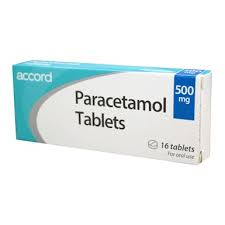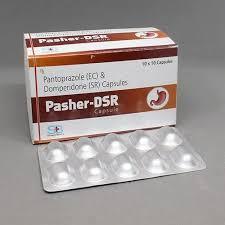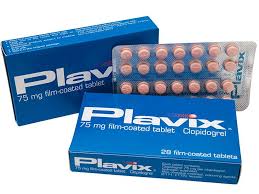Paracetamol
Paracetamol, often referred to as acetaminophen, stands as one of the most widely utilized medications globally. Esteemed for its efficacy in alleviating pain and diminishing fever, paracetamol is deemed safe when administered in appropriate dosages and is readily accessible without a prescription in numerous countries.

What is Paracetamol ?
Paracetamol is a distinguished medication classified among analgesics, commonly referred to as pain relievers, and antipyretics, which are effective in lowering fevers. In contrast to other pain management options such as ibuprofen or aspirin, paracetamol does not possess anti-inflammatory properties. Nevertheless, it is renowned for its gentle nature on the stomach, making it a safe choice when administered appropriately.
What is Paracetamol Used For?
Paracetamol: A Versatile Ally in Pain Management
Paracetamol serves as a refined solution for alleviating mild to moderate discomfort. Its efficacy shines through in various scenarios, including:
– Alleviating headaches, whether they be tension-related or migraines.
– Easing the throbbing of toothaches and post-dental procedure discomfort.
– Soothing menstrual cramps with grace.
– Relieving muscle strains, backaches, and joint discomfort.
– Providing comfort for mild arthritis.
Fever Alleviation
This elegant remedy is also adept at reducing elevated temperatures associated with:
– Common colds and influenza.
– Infections, whether bacterial or viral in nature.
– Fever following vaccinations in both children and adults.
Post-Surgical Comfort
Medical professionals often recommend paracetamol for managing post-operative pain, as it tends to be gentler on the stomach compared to other analgesics, ensuring a more pleasant recovery experience.
How Does Paracetamol Work?
Paracetamol operates by influencing the central nervous system, specifically the brain and spinal cord. It diminishes the synthesis of substances known as prostaglandins, which are pivotal in eliciting pain and elevating body temperature. By curtailing the levels of these chemicals, paracetamol effectively alleviates discomfort and reduces fever.
Forms of Paracetamol
Paracetamol is offered in a variety of formulations, ensuring accessibility for individuals across all age groups:
Tablets or Capsules: The predominant choice for adults and older children.
Liquid (Syrup): Ideal for younger children who are unable to swallow pills.
Suppositories: A solid variant administered rectally, beneficial for those who cannot take medications orally, such as in cases of vomiting.
Injections: Utilized in clinical settings for acute pain management or when oral intake is impractical.
Powders or Effervescent Tablets: Designed to dissolve in water for a more palatable consumption experience.
Dosage Recommendations
For Adults:
The standard dosage ranges from 500 mg to 1,000 mg (1-2 tablets) every 4 to 6 hours as necessary. It is imperative not to exceed a total of 4,000 mg (4 grams) within a 24–hour period.
For Children:
The appropriate dosage is contingent upon the child’s weight and age, typically calculated at 10-15 mg per kilogram of body weight every 4 to 6 hours. Always adhere to the dosing guidelines provided on the medication label or as directed by a healthcare professional.
Potential Side Effects of Paracetamol

While paracetamol is generally regarded as safe, adverse effects may arise, particularly with excessive consumption. Some potential side effects include:
Common Side Effects:
– Nausea
– Mild gastrointestinal discomfort
Rare Side Effects:
– Skin rashes or allergic reactions
– Occasional low blood pressure
Severe Side Effects (Overdose or Misuse):
– Life-threatening liver damage
– Kidney impairment with prolonged excessive use
Signs of Overdose
An overdose of paracetamol poses significant risks and necessitates immediate medical intervention. Symptoms indicative of an overdose include:
– Nausea and vomiting
– Abdominal pain
– Decreased appetite
– Jaundice, characterized by yellowing of the skin or eyes
– Severe confusion or drowsiness
If an overdose is suspected, seek medical assistance without delay.
Precautions and Warnings
Adhere to the Recommended Dosage
Exceeding the prescribed dosage can result in severe liver damage.
Review Other Medications
Numerous combination medications for colds, flu, or pain relief may contain paracetamol. Always scrutinize labels to prevent unintentional double-dosing.
Refrain from Alcohol
Consuming alcohol while taking paracetamol heightens the risk of liver damage.
Medical Considerations
Individuals with liver or kidney conditions should consult a physician prior to using paracetamol. Pregnant or breastfeeding women are advised to use only after obtaining medical guidance.
Guidelines for the Safe Use of Paracetamol
To ensure optimal safety, consume paracetamol with a glass of water, adhering strictly to the dosage instructions provided on the packaging. It is advisable to refrain from using for more than three consecutive days without the guidance of a healthcare professional. For those experiencing chronic pain, it is essential to engage in a discussion regarding long-term management strategies with a qualified medical expert.
Storing Paracetamol Properly
Maintain in a cool, dry environment, shielded from direct sunlight. Ensure it is stored out of the reach of children. Always verify the expiration date prior to usage.
Concluding Remarks
Paracetamol stands as a remarkably effective remedy for alleviating pain and reducing fever; however, it is imperative to utilize it with caution. When administered at the appropriate dosage, it is generally safe for the majority of individuals, yet improper use can result in significant health complications. Always peruse the label thoroughly and seek advice from a physician or pharmacist should any uncertainties arise regarding the use..






